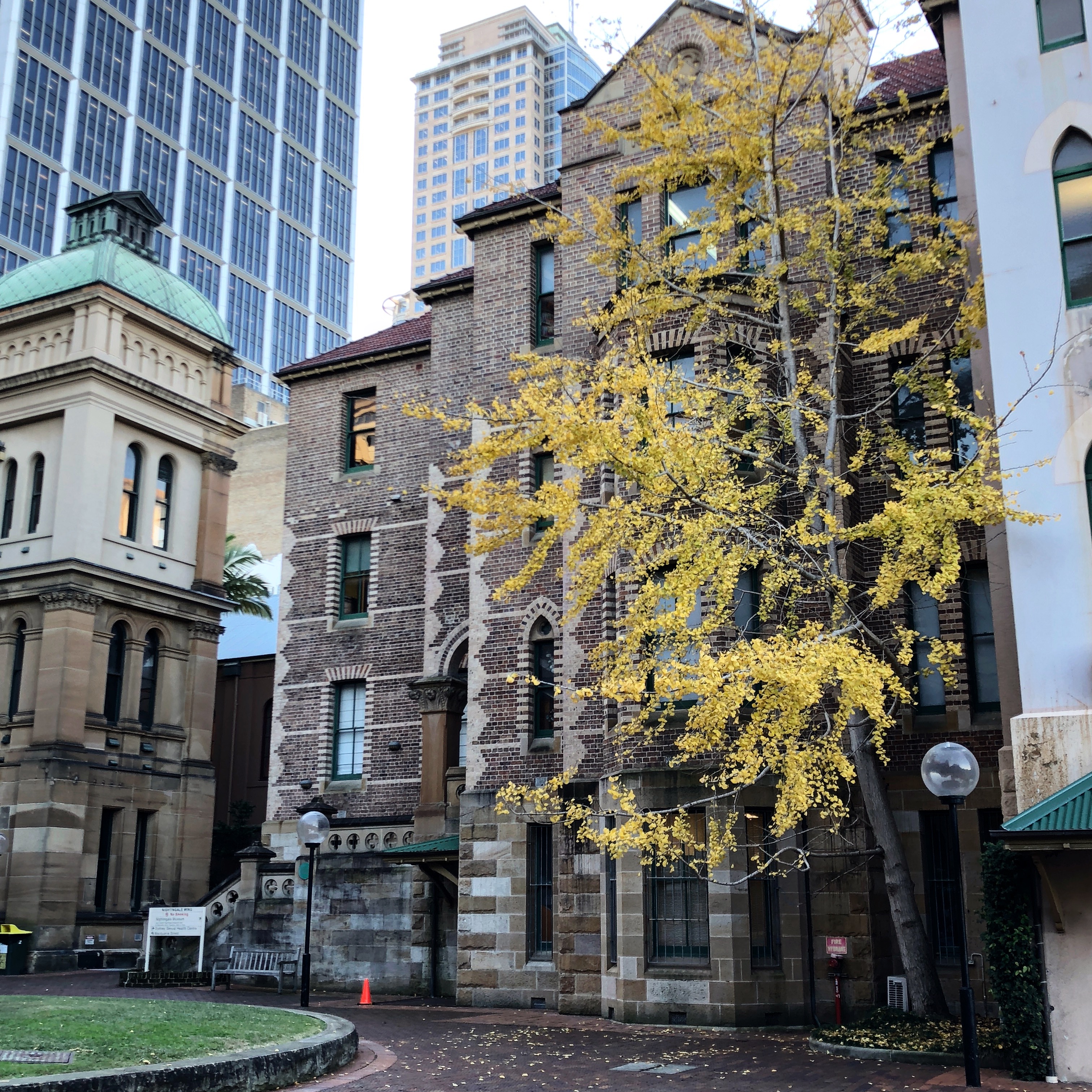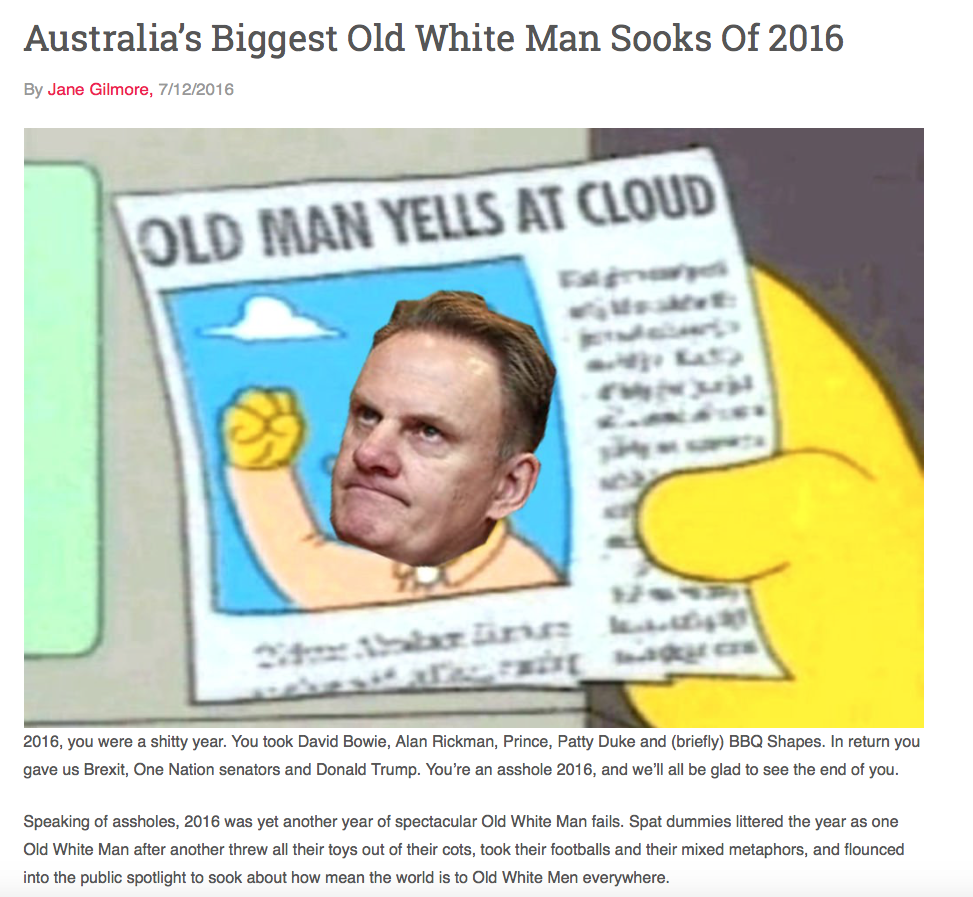Monkeypox in Australia
Over the last 2 years it has become common to refer to the covid-19 pandemic as an ‘unprecedented’ event – the first major epidemic of ‘our lifetimes’. I have heard colleagues, pundits and high distinction students describe covid-19 as ‘the first global pandemic of note since the Spanish flu’, or make statements to similar effect
For anyone whose life, intimate relations, friendship circles or social world have been touched by HIV/AIDS – I would venture to say that is most of us, whether we care to acknowledge it or not – such remarks are jarring.
But this habit of recollection also presents an opportunity to reflect on the discursive systems that structure what is considered to be ‘of note’ (meaning consequential, worth mentioning), and the kinds of people presumed and prioritized by those systems.
How can a virus that is estimated to have killed over 40 million people worldwide and infected up to 100 million people over the past 4 decades elude the attention of educated observers?
The answer has to do with the symbolic, psychic and scientific practices that serve to locate and contain the threat of infectious diseases within dominant social imaginaries.
HIV is routinely associated with homosexuals, people who inject drugs and other marginalized groups in Western consciousness – and not without justification, since for much of the epidemic, gay and other MSM have constituted roughly two thirds of infections in Australia, North America and Western Europe.
Meanwhile, though it accounts for about 20% of HIV infections in Australia, the possibility of heterosexual transmission tends to be constructed as the distant experience of developing countries, most evident in the figure of ‘African AIDS’ (Brotherton 2016, Patton 1992).
In 1987, Simon Watney drew attention to how the formation of the ‘general public’ in media discourses of HIV/AIDS basically excluded ‘everyone who stands outside the institution of marriage’ (Watney, 1987) Other HIV critics have worried about how the epidemiological construction of risk groups mapped onto gay and other stigmatized social identities, playing into the tendency of dominant culture to distance itself from the risks and responsibility of HIV.
In the early years of the crisis, North American AIDS activists responded to this situation by arguing that HIV education programs should prioritize ‘acts over identities’ (Jagose, 1996). In the context of the extraordinary neglect and rampant homophobia that characterized governmental responses to AIDS in that country, this counter-claim made sense, and it also usefully generalized the need for prevention.
This is a universalizing strategy[i] that cites a claim that is technically true to counter what it sees as the homophobic, epidemiological, minoritizing patterning of risk and infection. Let’s call it the ‘anyone can get it’ rebuttal.
When I run university classes on community responses to HIV in Australia, I am often struck by the coyness, if not outright resistance of many students to the claim that sex between men has been a principal route of HIV transmission in this country – as well as a key site of cultural, social, political, and practical innovations that seek to prevent it.
They think saying so is discriminatory, and so it is, but discriminating between real-world circumstances of risk and transmission is necessary for the effective distribution of care, prevention and responsiveness, historically and presently.
The risk of identification
On 23 July 2022, the WHO declared monkeypox (‘MPX’) to be a ‘public health emergency of international significance’. By that time, over 16, 000 infections had been recorded in 75 countries since May 2022, with the vast majority of cases (98%) identified in men who have sex with men (‘MSM’).[ii]
The WHO tweet mentioning ‘the outbreak is concentrated among men who have sex with men, especially those with multiple sexual partners’ was met with hundreds of replies accusing the organization of homophobia, with many drawing comparisons to the stigmatization of gay men during the early AIDS crisis.
MPX is rarely fatal, but the spectacle of a disfiguring viral infection spreading primarily among gay and other MSM recalls devasting, painful memories and horrifying images of the AIDS crisis for many.
The ‘lessons’ people are drawing from this history, while trying to recover from the losses and disruptions caused by another zoonotic virus (covid-19) are variable and disconcerting.
While many of WHO’s critics are rightly concerned about the anti-gay sentiment the official identification of MSM as a risk group may provoke, a prominent concern in some of this commentary seems to be that the focus on gay men is part and parcel of a homophobic refusal to acknowledge that anyone can get monkeypox, by virtue of its various modes of transmission, which (unlike HIV) are not limited to sex and needle-sharing. Why should vaccine programs single out MSM and not them they ask, presumably on behalf of the ‘general public’.
We have all dutifully accumulated a collective imaginary of unwitting airborne infection over the course of the covid-19 pandemic, a disposition that looms large in the above reactions. But these responses are also informed by the universalizing ‘anyone can get it’ rebuttal that can be traced, ironically enough, to the well-meaning efforts of educators to counter the phobic aversions embedded in framing HIV as a ‘gay disease’.
The version of HIV history invoked by WHO’s critics could certainly do with a bit of contextualizing, as a number of commentators have pointed out. The most egregious, homophobic aspect of early governmental responses to AIDS was not the identification of risk groups per se, but the systematic inaction and shameful neglect of the health crisis under the US Reagan administration and in Thatcher’s UK. The epidemiological identification of gay men and other marginalized, despised groups as ‘HIV risk groups’ was used to justify this murderous neglect: these lives were expendable, these deaths could be ignored, no crisis necessary.
Origin stories
MPX was first identified as a source of disease in humans in the Democratic Republic of Congo in 1970, with a case fatality rate of 3-6%. While small outbreaks have been identified in other countries and populations since 2003, including outside the African continent, they have generally been confined to very small case numbers and quickly contained.
Before this year, the largest outbreak on record began in Nigeria from 2017, when 200 cases were identified, predominantly among young adult men, a number of whom presented with genital ulcers and other sexually transmitted infections. (Ogoina et al. 2019).
The present international outbreak was first detected in early May in the UK and within a few days cases were reported in Europe, North and South America, Asia and beyond. Some experts have attributed the international spread of the virus to specific ‘superspreader’ events – specifically, two massive gay dance parties held in Europe over the northern summer.
The US and UK governments have been criticized for their tardy, uncoordinated responses to the present emergency, exacerbated by the chronic underfunding of sexual health services in the UK and other epidemic hotspots. In Australia criticism has so far been more restrained, though gay men have been watching anxiously as the virus runs rampant overseas and local case numbers creep upwards. Recent history has trained us to endure long waits for imported vaccines, it would seem.
The unfolding of this public health emergency internationally raises pressing questions about the priorities of global public health. Why have outbreaks in Central and West Africa over the past decades not garnered international attention or spurred vaccine manufacturers to step up production and distribution to this region? Why was an international emergency not declared earlier, enabling countries to trigger their emergency public health mechanisms and mobilise the necessary resources? And in our efforts to devise an effective strategy to prevent the further spread of MPX, how can the damages induced by stigmatizing responses be countered and avoided?
If the charge of homophobia can be levelled at the WHO response at all, it does not relate to their specification of the emerging epidemiology of the international outbreak. Instead, one might point to the relatively slow pace of their response. By the time WHO declared MPX an international emergency, some US officials were already worried ‘the window for getting control of this has probably closed’.[iii]
In Australia lately …
As with other global epidemics, the tyranny of distance and the seasonal lag between the Northern and Southern summer have so far worked to our advantage. When I asked the staff of a Sydney gay sauna whether they had noticed a drop-off in clientele in response to MPX, they told me things have been quiet, but no quieter than usual for this time of year. At the time of writing, 70 cases have been recorded in Australia (and 32 000 worldwide, which represents a doubling of global incidence in just 3 weeks).
A week after the WHO declaration, Australia declared MPX a ‘Communicable Disease Incident of National Significance’. In early August the Federal Health Minister announced they had secured 450, 000 doses of the vaccine Jynneos from Bavarian Nordic, its sole manufacturer, in a highly contested global market. While older smallpox vaccines exist, Jynneos is a third-generation subcutaneous vaccine which is safe for people living with HIV.
In Sydney and Melbourne, people are already being vaccinated. But only 20% of the vaccine doses are slated to arrive this year, and with Sydney set to host World Pride in February 2023 –an event expected to attract 500, 000 international participants – the task of vaccinating enough Australians quickly enough to avert a major outbreak over summer seems formidable, Herculean even – at least in Sydney.
Meanwhile, Australian governmental websites remain cagey about naming MSM as most at risk of contracting MPX, no doubt overly wary of stoking stigma.[iv] The limited supply of vaccines has nonetheless made it necessary to triage vaccination based on epidemiological risk profiles.
The online form that NSW Health has set up to register interest in MPX vaccination asks me about my sexuality, number of casual sex partners, whether I attend sex venues or group sex parties, and whether I engage in chemsex, among other questions. A payoff situation is created in which eagerness for the vaccine must be weighed against how much self-incriminating information one is prepared to disclose to a government website. Only the brave will qualify, it seems.
Reaping and sewing
In stark contrast to the shameful legacies of the Reagan and Thatcher administrations, the Australian response to HIV/AIDS is internationally acclaimed for pursuing a different, far more effective strategy. Federal Health Minister Neal Blewett and key advisors brokered a bi-partisan approach to the emerging crisis whose centrepiece involved working with advocates from affected communities to develop programs and policies – imagine that! making ‘junkies, poofters and whores’ policy partners!
These risk groups were better constituted as ‘affected communities’ and they were funded to form community organisations that were tasked with delivering carefully targeted education programs and support services that were ‘in touch’ with the subcultural lives and worlds in which the virus was circulating, about which governmental and medical officials agreed they knew little. This approach – which John Ballard (1998) characterized as ‘government at a distance’ – proved highly effective and later became known as ‘Australia’s partnership approach to HIV’.
The radical new approach to HIV prevention did not go uncontested. A more traditional approach was favoured by a number of top medical specialists and governmental advisors, who recommended standard measures such as mandatory testing of risk groups, compulsory notification of test results, quarantining those infected and the use of law enforcement to restrict their activity and movement: ‘test and contain’ as Paul Sendziuk (2003) characterizes this strategy.
Some of these advisors called for the closure of gay sex venues and saunas and the abandonment of Mardi Gras until the epidemic was over. Gay community activists had a different perspective: they situated these venues and events as vital opportunities for engaging and educating members of these ‘hard-to-reach’, affected populations about safe sex and other care practices. This reframing was effective. In 1985, a top medical advisor who in 1983 had called for the cancellation of the Mardi Gras party, describing it as a ‘Bacchanalian orgy’, completely reversed his position, stating ‘Mardi Gras would provide a perfect forum for large-scale education about AIDS’ (Race 2018)
The forms of top-down public health we have endured over the course of the covid-19 pandemic tend to misfire when an epidemic is concentrated in stigmatized sexual communities and other marginalized groups. They push those most affected further underground, away from vital education and services. So significant are the impacts of stigma on collective capacities for care that they necessitate a complete rethinking of public health strategies along the principles and lines first elaborated by the Australian partnership approach to HIV, which I have discussed in terms of ‘counterpublic health’ (Race, 2009).
How then to weigh the risks and benefits of minoritizing strategies – which draw on epidemiology to better target those at risk but in the process run the risk of dropping off the radar of public care and attention – and universalizing strategies – which generalize responsibility for disease prevention but may neglect to direct appropriate care and limited resources to those most in need, those most affected? It is a balancing act with no easy answers.
The tension itself is perfectly embodied in the infamous Grim Reaper campaign of 1987. Regarded by some as a wonderful success for keeping HIV on the public agenda –a matter of public concern in need of continued resourcing – others detest it for its ghostly incarnation of the threat of HIV in a figure far too easily mistaken for that of the HIV-positive gay man, thus redoubling on phobic mass stigma (Sendziuk, 2003)
Far less deadly, but more easily transmitted through close physical contact, the Australian monkeypox emergency should not require us to resurrect that Grim figure. A swift, focused response on the part of affected communities, organisations and experts well-versed in Australia’s partnership approach should let the Reaper rest in the ground a good while longer. Time to get sewing.
References
Ballard, J. (1998). The constitution of AIDS in Australia. In M. Dean and B. Hindess (Eds.) Governing Australia: Studies in Contemporary Rationalities of Government, (p125) Cambridge University Press
Brotherton, A. (2016). ‘The circumstances in which they come’: Refiguring the Boundaries of HIV in Australia. Australian Humanities Review, 60, 44-61.
Jagose, A. (1996). Queer theory: An introduction. NYU Press
Ogoina, D., et al. (2019). The 2017 human monkeypox outbreak in Nigeria—report of outbreak experience and response in the Niger Delta University Teaching Hospital, Bayelsa State, Nigeria. PLoS One, 14(4), e0214229.
Patton, C. (1992) From nation to family: Containing African AIDS. In A. Parker, M. Russo, D. Sommer, D., & P. Yaeger (Eds.) Nationalisms & Sexualities (pp 218-34). Routledge.
Race, K. (2018). The gay science: Intimate experiments with the problem of HIV. Routledge.
Race, K. (2009). Pleasure consuming medicine: The queer politics of drugs. Duke University Press.
Sedgwick, E. K (1990). Epistemology of the Closet. University of California Press
Sendziuk, P. (2003). Learning to trust: Australian responses to AIDS. UNSW Press.
Watney, S. (1987). The spectacle of AIDS. October, 43, 71-86.
[i] I take ‘universalizing vs minoritizing’ from the work of Eve Kosofsky Sedgwick (1990), who uses the terms in different context to describe countervailing theorisations of homosexuality (whether a minority trait, or a proclivity that is widely distributed albeit differently manifested throughout the population)
[ii] In the present outbreak, 95% of transmissions have been attributed to sexual activity, though authorities indicate the virus can spread through other forms of ‘close personal contact’, such as ‘direct skin-on-skin contact’ and exposure to contaminated bedlinen and household objects. The virus causes fever, headache, swelling of the lymph nodes and painful lesions across the body. In the UK, about 10% of those infected have required hospitalization due to secondary infections developing from these lesions. But since May 2022, only a few deaths from the disease have been recorded worldwide.
[iii] Compare covid-19, declared a ‘public health emergency of international significance’ on 30 January 2020, just a month after the Wuhan outbreak, when less than 8000 cases had been recorded, and fewer than 100 infections identified outside China.
[iv] This anxiety may also explain why a number of state authorities are still publicly attributing the high case numbers found among MSM internationally to their ‘higher health-seeking behaviour’ – an explanation that is by now unconvincing given MSM account for all MPX-related hospitalizations in the UK.



 Drawing on my experience of living with HIV for over two decades,
Drawing on my experience of living with HIV for over two decades, 



 The federal government actively panders to these sentiments, withdrawing funding from anti-bullying programs offering sex and gender diversity education in schools, and more recently, announcing a parliamentary inquiry into whether provisions that make it unlawful to publicly “offend, insult, humiliate or intimidate” others on the basis of race impose “unreasonable restrictions on freedom of speech”. (Won’t someone please unfetter the poor privileged white darlings?).
The federal government actively panders to these sentiments, withdrawing funding from anti-bullying programs offering sex and gender diversity education in schools, and more recently, announcing a parliamentary inquiry into whether provisions that make it unlawful to publicly “offend, insult, humiliate or intimidate” others on the basis of race impose “unreasonable restrictions on freedom of speech”. (Won’t someone please unfetter the poor privileged white darlings?). Image: Cartoonist Cathy Wilcox’s critique of Australian PM Malcolm Turnbull’s intention to stall a vote on marriage equality by requiring a public plebiscite, and de-fund the Safe Schools program, February 2016.
Image: Cartoonist Cathy Wilcox’s critique of Australian PM Malcolm Turnbull’s intention to stall a vote on marriage equality by requiring a public plebiscite, and de-fund the Safe Schools program, February 2016.

